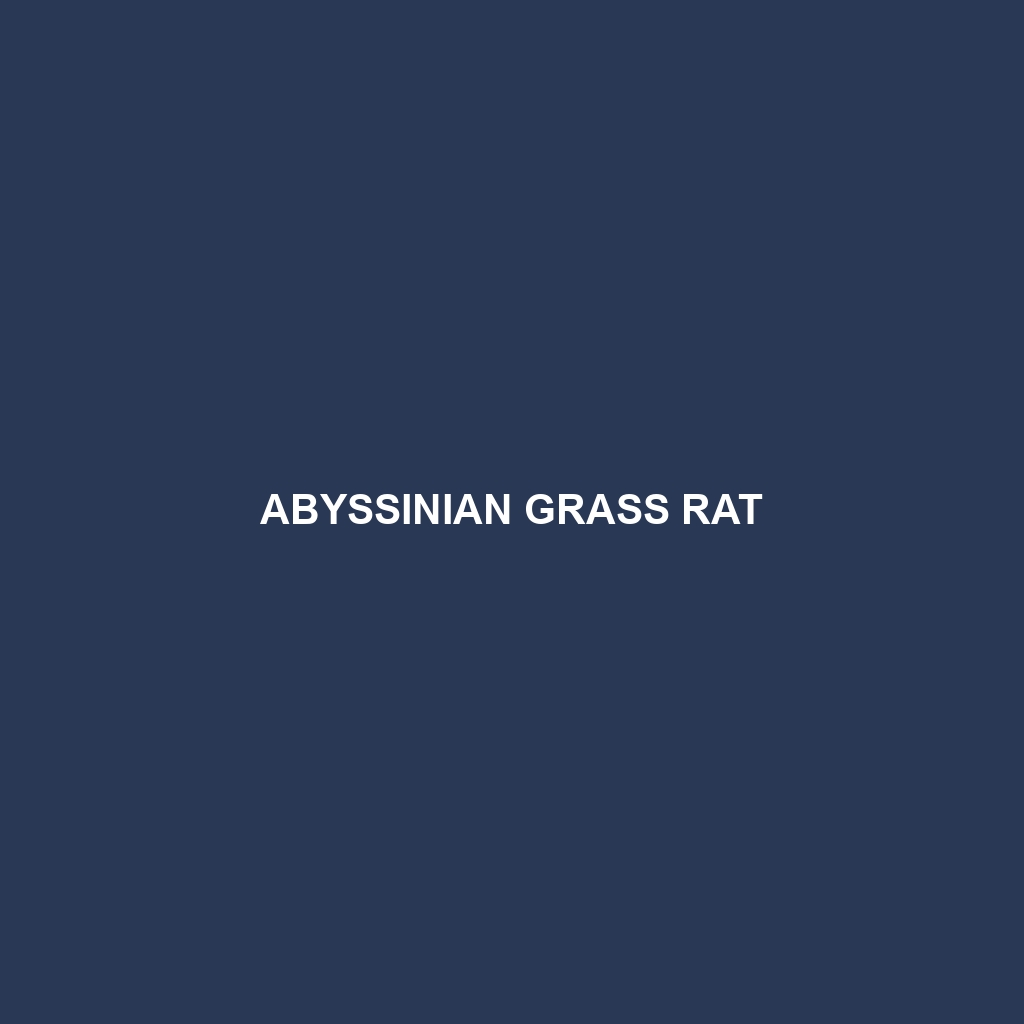Abyssinian Grass Rat (Scientific Name: )
Habitat:
The Abyssinian Grass Rat is primarily found in the highland regions of East Africa, particularly in Ethiopia and parts of Kenya. These rodents inhabit grasslands and savannas, thriving in environments rich in dense vegetation which provides ample cover and nesting sites. They prefer altitudes ranging from 1,500 to 3,000 meters, where they can find ample food sources and avoid heavy predation.
Physical Characteristics:
The Abyssinian Grass Rat typically measures between 25 to 35 centimeters in body length, with a tail that accounts for nearly half of its total length. Their fur is generally a soft brown to grayish color with a lighter underside, making them well-camouflaged in their grassy habitats. They have large, rounded ears, and their eyes are relatively large, providing them with excellent night vision. Distinctive features include their elongated snout and robust body, which enable them to navigate through dense vegetation effectively.
Behavior:
Abyssinian Grass Rats are known to be primarily nocturnal, exhibiting increased activity during the night when they forage for food. They are social creatures, often found living in groups that may facilitate communication and enhance foraging efficiency. Their burrowing behaviors are notable as they create extensive tunnel systems for shelter and as a means of escape from predators. Additionally, these rodents are characterized by their rapid reproduction rates in favorable conditions.
Diet:
The diet of the Abyssinian Grass Rat consists mainly of grasses, seeds, and roots. They are herbivorous and have adapted to consume various plant materials available in their habitat. During periods of abundance, they tend to stockpile food in underground burrows, ensuring adequate nutrition during scarce times. This feeding behavior plays a significant role in seed dispersal and plant growth in their ecosystems.
Reproduction:
Abyssinian Grass Rats have a high reproductive rate, with a breeding season that can occur year-round, depending on environmental conditions. Females typically give birth to litters of 3 to 6 young after a gestation period of approximately 23 days. The young are born blind and hairless but develop rapidly, becoming independent within a few weeks.
Conservation Status:
Currently, the conservation status of the Abyssinian Grass Rat is classified as “Least Concern,” according to the IUCN Red List. However, habitat loss due to agricultural expansion poses potential threats, and ongoing assessments are necessary to monitor their populations in the wild.
Interesting Facts:
Abyssinian Grass Rats have a unique adaptation for survival; they can tolerate lower oxygen levels at high altitudes compared to other species. They also communicate with each other through a variety of vocalizations, which can include squeaks, whistles, and chirps, enhancing their social interactions.
Role in Ecosystem:
The Abyssinian Grass Rat plays a vital role in its ecosystem as both a herbivore and a prey species. By feeding on grasses and seeds, they help maintain vegetation balance and contribute to nutrient cycling in the soil. Additionally, their burrowing activities aerate the soil, promoting healthy plant growth. As prey, they are a significant food source for various predators, helping to sustain the ecological web in their habitat.
